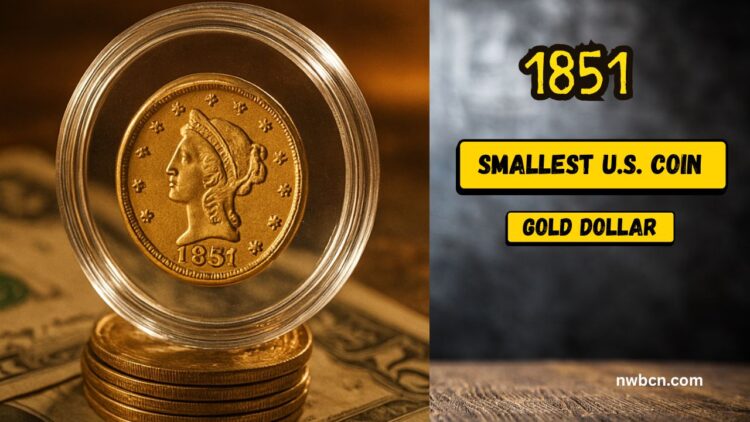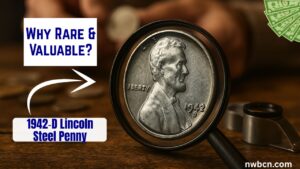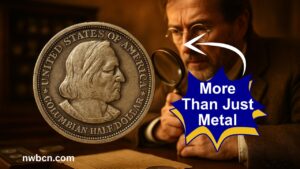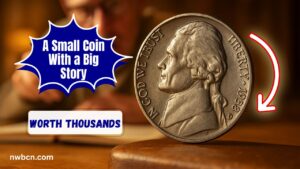In 1851, the U.S. Mint produced a coin that holds two unique distinctions: it was the smallest American coin ever struck by diameter, and also the lightest by weight.
The 1851 Gold Dollar, part of the Liberty Head Gold Dollar design, stands out not just as a rare collector’s item but as a marvel of minting design.
This article explores its historical background, specifications, economic context, and lasting legacy in American numismatics.
Origins and Legislative Background
The concept of a gold dollar had been proposed since the 1830s, but it wasn’t until the economic shift caused by the California Gold Rush that Congress took action. The Act of March 3, 1849 authorized the production of both the gold $1 coin and the $20 double eagle.
The coin’s design was created by James B. Longacre, Chief Engraver of the U.S. Mint. This was one of the first coins in U.S. history to feature a designer’s initial, the “L”, discreetly placed on Liberty’s neck.
The decision to produce a small coin stemmed from practicality and the intention to create a durable and efficient denomination for gold currency.
The Tiny but Mighty: Physical Characteristics
The 1851 Gold Dollar holds a record in U.S. numismatic history due to its physical properties. With a diameter of only 12.7 millimeters and a weight of just 1.672 grams, it is the smallest and lightest coin ever issued by the U.S. Mint.
Specifications of the 1851 Gold Dollar:
| Specification | Value |
|---|---|
| Year | 1851 |
| Type | Liberty Head (Type 1) |
| Diameter | 12.7 mm |
| Weight | 1.672 grams |
| Gold Composition | 90% gold, 10% copper |
| Actual Gold Weight | 0.04837 troy oz (≈1.505 g) |
| Edge | Reeded |
| Designer | James B. Longacre |
| Mint Marks | None (Philadelphia), C, D, O |
| Mintage (Philadelphia) | 3,317,671 |
The 1851 issue is particularly notable for its large mintage volume, especially from the Philadelphia Mint. This contributed to its wide circulation, but also highlighted the flaws of such a small coin in daily use.
Design Motivations and Public Reception
The main reason for the coin’s unusually small size was the need to conserve gold while producing a practical denomination. However, this practicality came at a cost. Though the coin was widely used for a brief period, it received criticism almost immediately.
Many considered the coin too small for convenient handling. Newspapers in New York mocked its size, calling it “too delicate and beautiful to pay out for potatoes.” There were even suspicions that the Mint Director deliberately allowed the coin to be impractical to stir public controversy, which eventually played a role in his retirement.
Despite the criticisms, the gold dollar fulfilled a critical role in the U.S. monetary system, particularly during a time when silver coins were being hoarded due to their melt value exceeding face value.
Minting and Circulation
In 1851, the U.S. Mint in Philadelphia produced over 3.3 million gold dollars, the highest mintage of any year for this denomination. The branch mints in Charlotte (C), Dahlonega (D), and New Orleans (O) also struck limited quantities.
While the coin saw regular circulation between 1850 and 1853, its extremely small size led to widespread loss and confusion.
Many people reportedly mistook it for other coins or lost it entirely in day-to-day transactions. As a result, its practicality was continuously debated throughout its life in circulation.
Design Evolution After 1851
The impracticality of the Type 1 Gold Dollar led to rapid design changes by the U.S. Mint:
- Type 2 (1854–1855): Introduced a slightly larger 14.3 mm diameter and changed the obverse design to feature a Native American princess. However, the high-relief details made these coins hard to strike properly.
- Type 3 (1856–1889): Improved the striking issues by reducing relief and slightly modifying the bust design. The diameter remained at 14.3 mm.
Despite these changes, the original Type 1 Liberty Head Gold Dollar from 1851 remained the smallest coin in U.S. history by both size and weight.
Numismatic and Historical Significance
The 1851 Gold Dollar is more than just a coin—it’s a physical reflection of economic shifts and minting innovation. Its tiny dimensions, coupled with its short-lived popularity, give it high historical and collector value.
Surviving examples of the 1851 Philadelphia issue are estimated to be around 6,000. Of these, approximately 2,500 are in Mint State (MS60+), and fewer than 150 are graded MS65 or better.
These pristine examples have fetched auction prices over $100,000. For example, a superb MS68+ specimen reportedly sold for $108,000 in 2021.
The coin’s melt value today, based solely on its gold content, is approximately $160, but its true market value is far higher due to rarity and demand among numismatists.
Cultural Impact and Discontinuation
Over time, the coin’s impracticality for circulation led to its removal from active coinage. By the late 1880s, Mint officials and the public recognized that the gold dollar was more ornamental than useful.
Congress officially discontinued the gold dollar in 1890, along with several other low-denomination and underutilized coins. Still, the 1851 issue remained a collector favorite and a prime example of American minting evolution during the 19th century.
Legacy of the 1851 Gold Dollar
The legacy of the 1851 Gold Dollar is unmatched. As the smallest U.S. coin ever made, it holds a permanent place in numismatic history.
It was the first coin to include a designer’s initial—a now-common feature in modern coinage.
It also symbolizes a significant moment in economic history, when America shifted from silver-based commerce to gold, driven largely by the gold rush and the resulting surplus of precious metal.
Collectors today seek out this coin not only for its rarity and beauty but also for its importance in telling the story of a rapidly evolving American economy.
Key Technical Specifications Table
| Feature | 1851 Gold Dollar (Type 1) |
|---|---|
| Diameter | 12.7 mm |
| Weight (Total) | 1.672 grams |
| Gold Purity | 90% |
| Actual Gold Content | 0.04837 troy ounces |
| Edge | Reeded |
| Designer | James B. Longacre |
| Mintage (Philadelphia) | 3,317,671 |
| Surviving Estimate | ~6,000 total; ~2,500 MS60+ |
| High Auction Value | $108,000 (MS68+) |
| Circulation Period | 1850–1854 (primarily) |
The 1851 Gold Dollar may be small in size, but its impact on American monetary history is immense. From symbolizing the influx of gold in the economy to marking the first use of a designer’s initial, this coin was both a technical achievement and a cultural icon.
Though no longer in circulation, its status as the smallest and lightest coin ever produced by the U.S. Mint ensures its place in history—and in the prized collections of numismatists around the world.
FAQs
1. What makes the 1851 Gold Dollar so historically significant?
The 1851 Gold Dollar is the smallest and lightest coin ever minted by the U.S. Its introduction was driven by the California Gold Rush and its design marked a transition in minting priorities and economics.
2. Why was the gold dollar discontinued?
It was discontinued due to impracticality. Its small size made it difficult to use, easy to lose, and hard to mint with consistent quality. These issues led to its official discontinuation in 1890.
3. How much is an 1851 Gold Dollar worth today?
While its melt value is around $160 based on current gold prices, collector-grade versions, especially those in Mint State condition, can fetch thousands of dollars. The highest graded examples have been sold for over $100,000 at auction.




